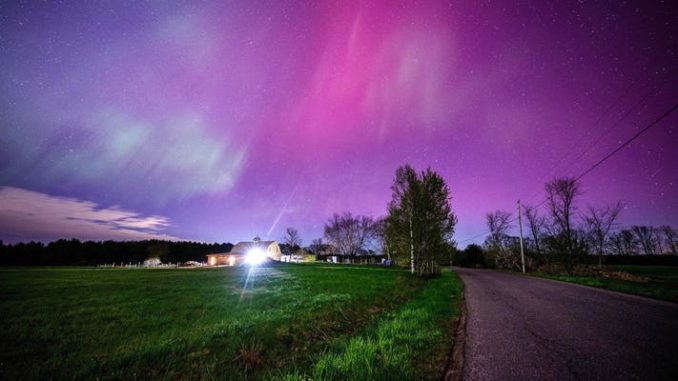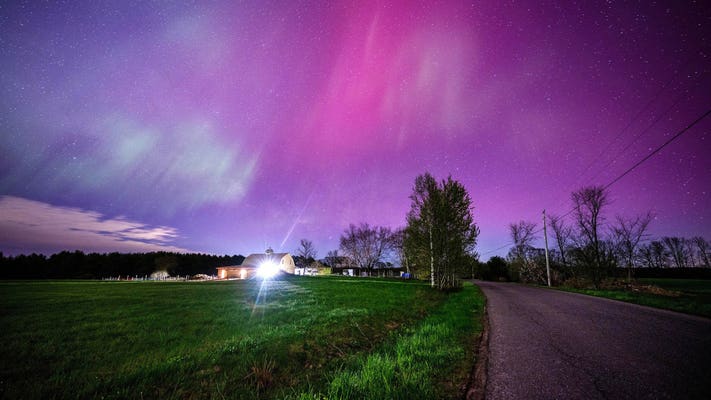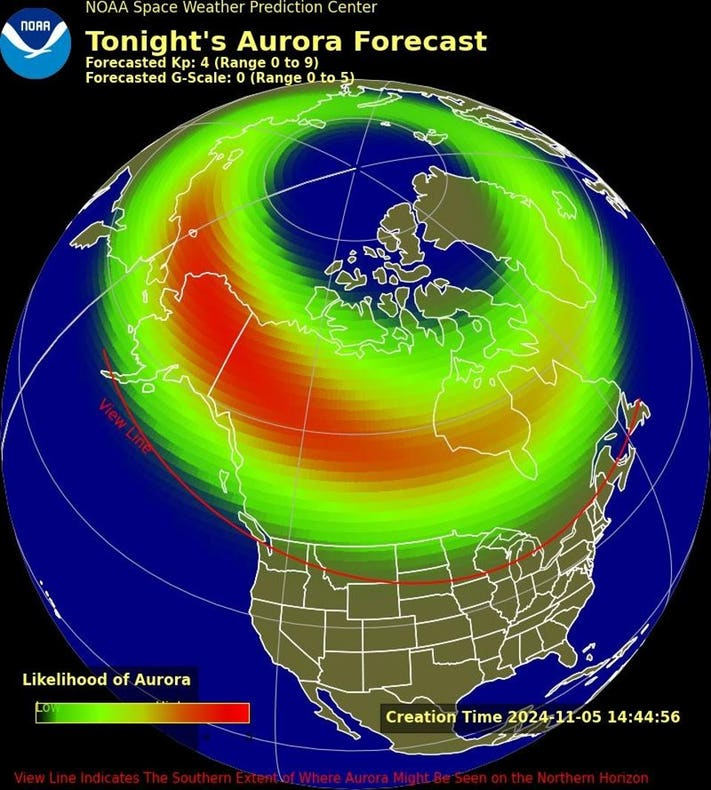
Northern Lights Forecast Update: Here’s Where Aurora Borealis Would Be Seen Tonight As Likely Geomagnetic Storm Nears
Auroral activity would likely be seen below the Canadian border on Tuesday night, and there’s a chance the northern lights will become more visible in the coming days as geomagnetic storm conditions likely increase, according to a National Oceanic and Atmospheric Administration forecast.
Key Facts
Auroral activity is forecast with a Kp index of four on a scale of nine for Tuesday night, indicating the northern lights will “become brighter” and be “quite pleasing to look at” for those in the right area.

Minor or greater geomagnetic storms—caused by a burst of energy and particles released by the sun—are likely on Thursday, which could pull aurora borealis further south, according to NOAA.
The NOAA forecast a maximum Kp index of four for Wednesday and five for Thursday, and there’s a possibility for minor solar radiation starting Tuesday, which could impact low-frequency navigation signals.
Where Will The Northern Lig
There’s a high chance of seeing the northern lights in northern Canada and Alaska, with a low chance of viewing the phenomenon in parts of northern Washington, Montana, North Dakota and Minnesota. States just above the view line—marking a minimal opportunity to see auroral activity—sweeping just into Idaho, South Dakota, Michigan and Maine. (See viewing line below.)

What’s The Best Way To See The Northern Lights?
NOAA recommends traveling away from light pollution to a high vantage point to see the northern lights, which are best seen between 10 p.m. and 2 a.m.
What’s The Best Way To Photograph The Northern Lights?
Visit Iceland, Iceland’s tourism website, recommends turning on your smartphone’s night mode with a lower shutter speed. If using a regular camera, Adobe suggests setting the focus to the farthest possible setting with a wide aperture, lower shutter speed and a high ISO value.
Key Background
Celestial activity has surged over the last month as NOAA and NASA say activity on the sun has reached a “solar maximum.” This peak will result in more sunspots and coronal mass ejections, causing a shift in space weather that often causes aurora borealis to become more visible to more people. The peak will likely continue through 2025 and into early 2026. Other events have appeared in the night sky, including the recent Southern Taurid meteor showers, which peaked in activity on Sunday night. The Northern Taurids, active since Oct. 13, will peak next week and persist through Dec. 2. Four other meteor showers will appear this year, including the Leonids, Geminids, Ursids and Quadrantids.
Leave a Reply